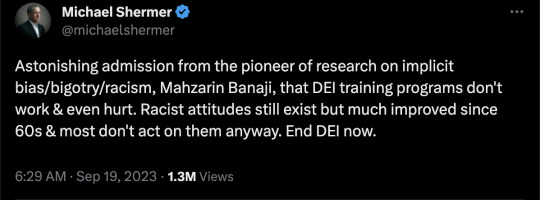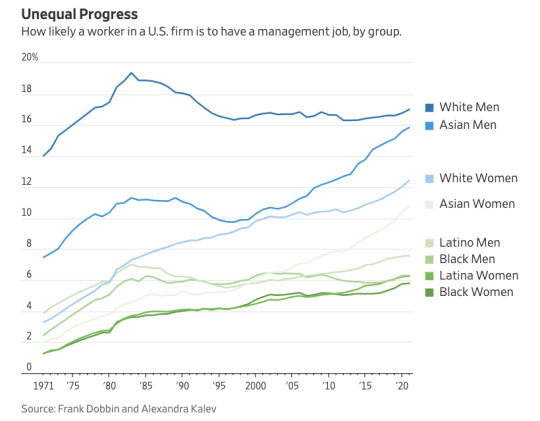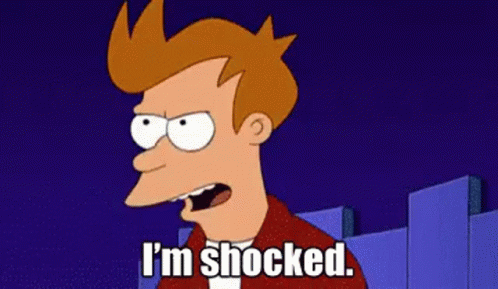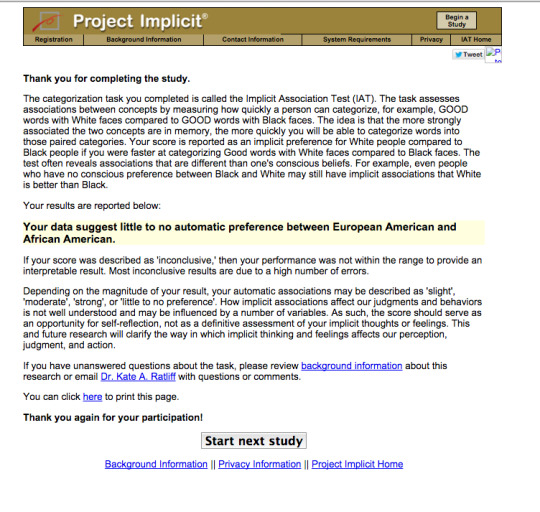#implicit bias test
Explore tagged Tumblr posts
Text


By: Mahzarin Banaji and Frank Dobbin
Published: Sep 17, 2023
At least 30 states are considering legislation to defund DEI initiatives in public universities and state agencies. At the same time, conservative activists, emboldened by the Supreme Court’s ruling against affirmative action in college admissions, are suing companies to stop DEI initiatives. These challenges come on the heels of the growth of corporate DEI programs after the murder of George Floyd in May of 2020.
Meanwhile, advocates for DEI—which stands for diversity, equity and inclusion—have bemoaned the fact that after decades of diversity training, many university faculties, state agencies and corporations have made little progress on diversifying the workforce.
Are the right and the left on the same page here—is diversity training a hopeless cause?
We are a psychologist and a sociologist who have been studying bias and organizational diversity programs, respectively, for decades. The research makes it clear that Americans desperately need education about bias, because even people who value fairness and equality hold biases—without being aware of it. They need to understand that bias operates systemically and must be addressed at the individual, institutional and societal levels.
Education offered on these matters is very much in the national spirit. As Alexis de Tocqueville noted in “Democracy in America” in 1835: “The greatness of America lies not in being more enlightened than any other nation, but rather in her ability to repair her faults.”

What research shows
The social and behavioral sciences have developed strong evidence about conscious prejudice and implicit bias. Three lines of research, together, are pertinent. One provides good news. As our colleague Larry Bobo has documented, conscious unabashed racial prejudice has fallen consistently since the 1960s. White Americans today largely believe in racial equality.
This isn’t to say that explicit expressions of prejudice have evaporated; in fact they pop up with surprising regularity. The pandemic witnessed precipitous increases in anti-Asian hatred, and according to the Anti-Defamation League, instances of antisemitism are at a record high.
A second line of research shows that less conscious, or implicit, bias has declined more slowly. Bias against some groups has barely budged. If only explicit values and biases drove discrimination, unfair treatment of, say, Black workers would be low. But implicit bias taints employer behavior and decisions. Our colleague Mandy Palais and collaborators find, for instance, that implicit racial bias in grocery-store managers still influences worker performance.
A third line of research uses audit studies, in which matched Black and white people, for instance, apply to the same job. Who gets called in for an interview, or hired? Scores of studies show discrimination by race, ethnicity, gender and disability. These studies show, among other things, that white applicants are about 50% more likely than identical Black applicants to be called back for an interview or offered a job. Other audit studies show discrimination in real-world access to financial resources, healthcare and treatment by the law and law enforcement.
Research by Lincoln Quillian and colleagues compares the results of audit studies over time, finding that discrimination against Black job applicants is virtually unchanged from a generation ago. And the economist Raj Chetty and colleagues not only show a shocking drop in American upward mobility over time, but also show that in regions with high levels of implicit bias, Black Americans are less likely than white Americans to move up the economic ladder.
Research by Lincoln Quillian and colleagues compares the results of audit studies over time, finding that discrimination against Black job applicants is virtually unchanged from a generation ago. And the economist Raj Chetty and colleagues not only show a shocking drop in American upward mobility over time, but also show that in regions with high levels of implicit bias, Black Americans are less likely than white Americans to move up the economic ladder.
Research from one of us, Frank Dobbin (with Alexandra Kalev), meanwhile, shows how likely a worker in a U.S. firm is to have a management job, by group. Women and people of color see increases until the mid-1980s. But progress stalls for Black and Hispanic workers after that. Men from those groups make no progress between then and 2021, and women make almost no progress. We clearly have more work to do to equalize opportunity.
Falling short
It’s not hard to conclude from all these studies that we are not the land of opportunity for everyone we claim to be. An enlightened society should see that education about the prevalence of discrimination is imperative. In fact, it would be downright dumb not to educate people.
But, as Dobbin and Kalev have shown, the typical DEI training doesn’t educate people about bias and may even do harm.
Most training programs fall short on two fronts. First, they use implicit-bias education to shame trainees for holding stereotypes. Trainers play gotcha, sending trainees to take an online test co-developed by one of us, Mahzarin Banaji, for education and research. Instead of training people about research that finds that bias is pervasive, trainers use the test to prove to trainees that they are morally flawed. People leave feeling guilty for holding biases that conflict with American values.
“Gotcha” isn’t going to win people over. The approach is disrespectful, and misses the main takeaway from implicit bias research: Everyone holds biases they don’t control as a consequence of a lifetime of exposure to societal inequality, the media and the arts. Trainers should introduce these ideas with humility, for trainers themselves can’t help but hold these very biases. They could easily educate themselves about the implicit bias research with resources at outsmartingimplicitbias.org.
The second problem with most trainings is that they seek to solve the problem of bias by invoking the law to scare people about the risk of letting bias go unchecked. Trainers recount stories of big companies brought to their heels by discrimination suits. They detail rigid do’s and don’ts for hiring, disciplining and firing people. They require trainees to pass tests on what the law forbids. All of this makes it clear that the CEO approved the training solely to avoid litigation. Trainees leave scared that they will be punished for a simple mistake that may land their company in court.
Trainings with this one-two punch—you are biased and the law will get you—backfire. The research shows that this kind of training leads to reductions in women and people of color in management.
Why would diversity training actually make things worse? Making people feel ashamed can lead them to reject the message. Thus people often leave diversity training feeling angry and with greater animosity toward other groups (“There’s no way I’m biased!”). And threats of punishment, by the law in this case, typically lead to psychological “reactance” whereby people reject the desired behavior (“Nobody’s telling me what I can’t say!”). This kind of training can turn off even supporters of equal-opportunity programs.
A better way
It doesn’t have to be this way, and Dobbin and Kalev’s research on training points to a better alternative. Instead of using legal scare tactics, training programs should give managers a way to counter biases—namely, training in strategies for cultural inclusion. This kind of training teaches skills in listening, observation and intervention. It thus helps managers to hear employee concerns, notice when workers are feeling shunned or dissed, and intervene. It also offers skills for starting tough conversations about how to treat colleagues at work.
Those are skills from Management 101, but managers often don’t want to hear bad news, so they don’t ask employees about troubles, watch teams for signs of bullying, or speak up when they sense a problem. Reminding managers that they can use these tools to suss out problems and nip them in the bud helps them to feel capable of managing biases and microaggressions. When managers use these skills, they retain women and people of color for long enough to come up for promotion. That’s how good diversity training can boost diversity. Unfortunately, only about a quarter of diversity trainings emphasize cultural inclusion.
Moreover, if training succeeds in conveying the findings from bias research—that bias is unseen but pervasive—it can build support for wider systemic changes designed to tear down obstacles to equal opportunity. In that sense, training isn’t designed to blame people for their moral failings. Instead, it’s galvanizing them to support organizational change by arming them with knowledge.
In the end, DEI training can’t squelch implicit bias; nothing short of changing people’s life experiences can do that. But when done right, implicit-bias education can alert students to the fact that people committed to equality nonetheless hold biases. And that knowledge can, in turn, motivate them to reshape their workplaces to counter discrimination by democratizing key parts of the career system.
That means extending recruitment visits from Harvard to Howard; offering mentors to each and every worker; and inviting all employees to nominate themselves for skill and management training programs. It means offering work-life supports to people up and down the ladder. Each of these changes has been shown to produce significant increases in managerial diversity.
The lesson here, the one that should be at the core of DEI training, is that implicit bias resides in individuals, but it resides in organizational career systems as well. And fixing those systems is as simple as democratizing them.
Mahzarin Banaji is a professor of psychology at Harvard University and co-author of “Blindspot: Hidden Biases of Good People.” Frank Dobbin is a professor of sociology at Harvard University and co-author of “Getting to Diversity: What Works and What Doesn’t.” They can be reached at [email protected].
[ Via: https://archive.is/0D4kV ]
==

#diversity training#DEI training#implicit bias#implicit association#implicit bias test#implicit association test#diversity equity and inclusion#diversity#equity#inclusion
9 notes
·
View notes
Text
so I took the implicit bias test and I’m not biased with race or gender or anything...but I am biased because apparently I like gay ppl better than straight ppl....(this is a bad thing right)
3 notes
·
View notes
Text
Had to take a few implicit bias tests for work today. I had little or no implicit bias on everything except:
- slight bias against Christianity
- slight bias towards differently abled folks over abled people
- strong bias towards gay
#not surprised#lmao#implicit bias#implicit bias test#cde#essu#diversity training#gay#lgbtq#its official
0 notes
Link
Implicit bias test for race and mental health.
0 notes
Text
I Took Harvard’s Implicit Bias Test -- Here are my results...
I’m at the last stage of development for my VR game that prototypes how we can ‘virtually gamify’ to counteract unconscious bias behavior, specifically in the workplace. I’ve been avoiding taking the test because I was scared of knowing ‘the truth’. I pride myself on being like the best humanitarian human being alive so to know that I could possibly biased would have threatened my self-identity. ^_^
(*cue evil laughter)
I wanted to see how they measured unconscious bias behavior and I learned that it was through negative/positive word associations and natural response to applying them to faces of different skin color.

Buzzfeed put together a video of people taking the test and every single one of the test takers had a bias towards a particular physical characteristic. This is not bad or anything to even feel bad about as it is mainly a reflection of the experiences/environments/messaging we’ve been exposed to. Unconscious = beyond our control.
Anyways, so here’s my verdict!

So I’m a huge hypocrite in being elated that I’m not but I can’t help it. If it turned out that I was biased towards a specific group it would have put me in deep reflection mode for the rest of the week....which is actually a REALLLLLYY positive thing because than I would be motivated to make conscious efforts. I wouldn’t want anyone to endure suffering or offenses when interacting with me just because of their skin color. So even though it would have been hard at first to accept, I know I would have make sure to do all in power to address it.
#howimfeeling

white and black ppl, you are all safe with me!!! ;D
(The full disclosure!)

#bias#unconscious bias#implicit bias test#implicit bias#harvard#test#microaggression#stereotypes#skin color#preferences
0 notes